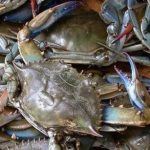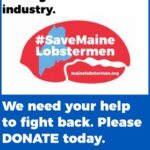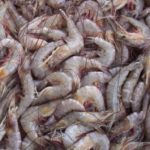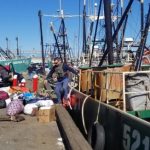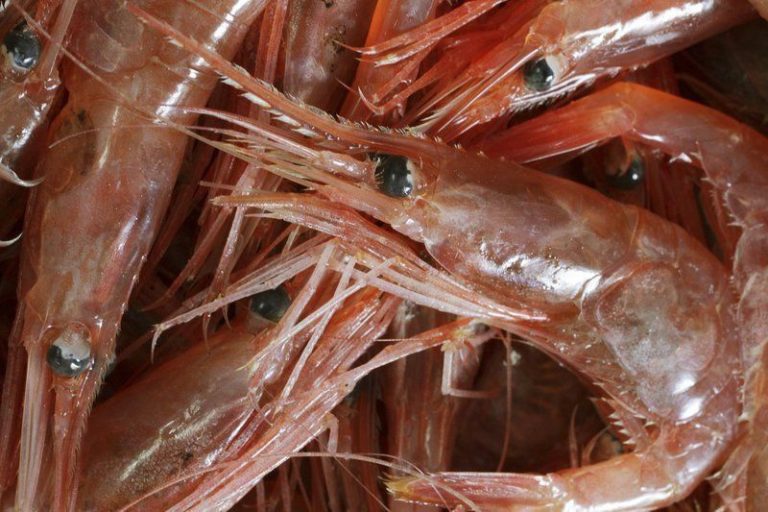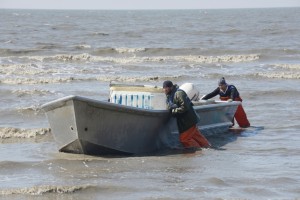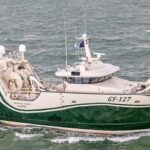CITES lists Mako shark under Appendix 2 trade restrictions, By Jim Lovgren
Despite opposition from the US delegation CITES [Convention on International Trade of Endangered Species, CoP 18] voted by more then the required two thirds majority to list Mako Shark under Appendix 2 which severely impacts the buying and selling of Mako shark meat and fins internationally. Two Species of Mako were listed, the long fin, and the Short fin, despite the fact that the best science available estimates the world wide population of Mako shark’s at over ten million fish and the CITES secretariat opposed their listing. Also listed were 6 species of Giant Guitarfish, and 10 species of Wedgefish’s both of which are Shark like skates and are highly valued for their fins.
CITES meets every three years at different locations around the world to discuss and review the status of endangered and threatened species of Flora and Fauna and how international trade in them effects their survival. Over their 50 plus years of existence they have listed thousands of plants and animals for trade restrictions in an attempt to save them from extinction. It is a noble cause and the delegates appointed to CITES take it very seriously. About 180 countries participate in the CITES convention, with many countries employing the full 8 delegate members allowed. Each country is allowed only one vote, per issue, and the vote in most cases require a two thirds majority. The country Delegates are named Party, [hence the CoP means convention of parties, with #18 being the 18 th meeting overall]. Also involved are the NGO’s who are observers to the convention, and are not allowed to vote, but are allowed some involvement in the discussions. There are generally between 3 and 4 thousand delegates at each CITES with the Party/NGO’s split about half and half.
I was very impressed with how well the convention was run since it included so many people from around the world, and was amazingly put together in record time due to the cancellation of the original site in Sri Lanka because of the Easter terrorist bombings a month before the Convention was
scheduled. Graciously the Swiss government [where CoP is headquartered] worked over time to help find a site, Palexpo at the Geneve airport, and then helped by donating over $600,000 to help cover the cost of the Convention, which ran from August 16 th to the 28 th . Palexpo is huge and situated conveniently right next to the airport. At the convention two meetings would take place at the same time in different meeting rooms with over a thousand participants in each room, which is why countries need at least 2 party delegates, and for better participation 4. CITES does not pay delegates to attend they must come up with funding for their travel, room, and food by anyway they can, which leads to the wealthier countries being able to afford to send as many as 8 delegates, while poor third world countries may not even be able to afford to send anyone. This leads to problems as many of these poorer countries are the ones that have the most endangered plants and animals and also people that may depend on them for
subsistence. An Appendix 1 or 2 listing can have severe social and economic consequences for many people while sometimes doing nothing for the flora and fauna it is supposed to protect.
Over the last few decades a divide has been widening among the “no use” group, those people that believe that once listed there should be no trade what so ever in the listed creature, and the “sustainable use” group, those people that believe that some highly regulated trade not only can help
indigenous people that have historically utilized such flora and fauna but also is a better management tool for increasing and regulating their threatened populations. Caught in the middle of this rift are the poor countries that can’t afford to send delegates, they either participate with as little as one delegate and have to choose which meeting to attend, or they seek out third party “sponsors’ who are willing to donate money to these countries so that they can participate, and hence have a vote on the matters at hand. This is where the deep pockets of the “No use” NGO’s come into play, they can afford to pay to make sure that certain countries can attend the meetings and then vote for the things that they recommend. It is pure pay to play politics at its worst, and could somewhere down the line doom CITES to the trashcan of history. If people feel indebted to someone because of a gift they will do what that person wants even if it is against their better judgement. Because every country gets a vote, this leads in many cases to countries voting for or against listings they have absolutely no concern with, and they can sway the vote, and harm other countries that do have real concerns of the listing effect. CoP should aggressively work to solve the problem of poor countries participation and ban any contributions to voting parties by NGO’s.
I noted many similarities regarding the influence of green money on the CITES party delegates and what has been happening in U.S. fishery management. Sustainable use advocates are totally out gunned when it comes to trying to get their point across because the “No use” proponents have such a vast amount of money to spend due to the huge fortunes they have accumulated from fund raising, and corporate donations. This is exactly what is happening to U.S. fishermen, as small owner operator vessels are being squeezed out of fishery after fishery by the manipulations of “Greenwashed” corporate sponsored Enviro groups, out to save the planet. The U.S. government offers no help to the fishing industry because they are simple pawns to the energy companies that are running the show. Fishermen are just a nuisance, in the way of their offshore energy development plans.
As everybody in the fishing industry knows, the best available science may not be the best science, and politics can play as big a roll as actual science when it comes to fishery management or CITES listings. Cites utilizes the FAO, [Food and Agriculture Organization] a world wide collection of
scientists who review all the past and current science for flora and Fauna that is, or may be listed by CITES. When a species is proposed for a CITES listing its science is reviewed and Cites usually will make a recommendation concerning whether the species should be listed or not. This is also true if on the rare occasion a species may be downgraded or even unlisted. Generally the CITES recommendation rules the day. This is no longer true thanks to the growing effectiveness of the “No Use” advocates. They now orchestrate the media to play their doom and gloom songs, and spend millions to manipulate the vote of countries. During the closing ceremonies a party delegate from Mali actually thanked the Species Survival Network for their help.
In regard to the Mako shark vote, it reached the required two thirds needed for a listing, but it was close enough to dispute and possibly reopen the debate a few days later. That did not happen though as no one was willing to take the step required to reopen the debate. The U.S. delegation
certainly could have and had a number of other countries who would of supported them, but they were content to simply accept the defeat that will cost U.S. fishermen dearly in the future. CITES secretariat recommended against the Appendix 2 listing for Mako shark but their recommendation was ignored and NGO influenced countries, especially the European Union voted for the listing. The EU voted as a group with their vote counting as 28 votes, whether every country agreed or not. I find it hard to believe that some of those countries, especially Spain ,Portugal, Norway, and Sweden, all with long fishing histories, would vote against the science on this matter. If the Countries voted independently the vote would have been different. Also the debate could have been reopened and the U.S. could have discussed having the EU abstain from the vote, which would have changed the outcome. Unfortunately none of this happened.
Why does this matter? The “No Use” advocates have found that they can use the lack of absolute population estimates for marine species and influence the vote by crying the sky is falling, what if there are even less of these creatures then we think? There may only be 9 million Mako’s in the
world’s oceans. The prudent course in the case of Mako shark would have been to delay action for 3 years to see if present trends continue, and see if the stringent management measures many countries have taken to benefit Mako’s are having a positive effect. With a biomass of 200 million pounds of Mako swimming around, I don’t think a three year delay would hurt anything. What this vote does though is embolden the “No Use “ NGO’s to pursue other animals that are also not endangered, but suffer from a lack of science or knowledge of their populations. I can guarantee that Spiny Dogfish will once again come up for an Appendix 2 listing which would destroy the market for the healthy and well managed U.S. fishery and cause another environmental catastrophe as the Dogfish eat everything that swims on the US east coast. They are presently at 3 times the population level they were at in an unfished state in the 1960’s, and NMFS own science states without removal of some of the Elasmobranch biomass, the Cod, Haddock, and Flounder populations may never recover on the US east coast. Protection of Spiny Dogfish has cost the US economy hundreds of millions of dollars in lost fishing opportunity as many species have no chance of recovery because they are eaten by this voracious apex predator. Make no mistake, the Spiny Dogfish even though it is comparably small [about 3 feet] is the most dangerous fish on the US east coast. Schools of Thousands follow temperature gradients and eat everything in their way. While they may not be able to eat some mature species, you can be sure they eat their spawn. So be prepared for the NGO’s to come after many more marine species after their success in Geneve.
The CITES process is complicated, and we need to try to stay ahead of the “No Use” proponents which will be best accomplished by intervening earlier through the working groups, and committees, and working with the US government to assure that fishermen’s concerns are heard. My personal thanks to Eugene LaPointe and his marvelous wife Helene whose Group IWMC led the sustainable use proponents and brought me on as an expert fisherman for their contingent.
Thank you, James Lovgren





































